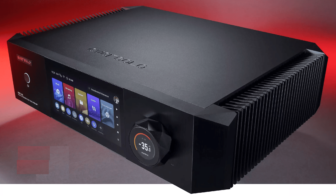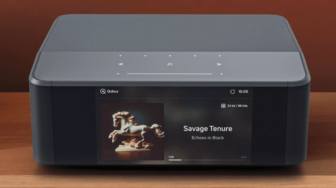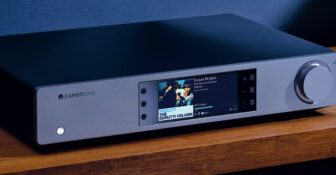WiiM Ultra Review
If your summer isn’t as exciting as you hoped, consider adding some fun with the WiiM Ultra streaming device. This sleek gadget has a lot to offer to music lovers. Tested at just 400 Euros.
by Reinhard Paprotka
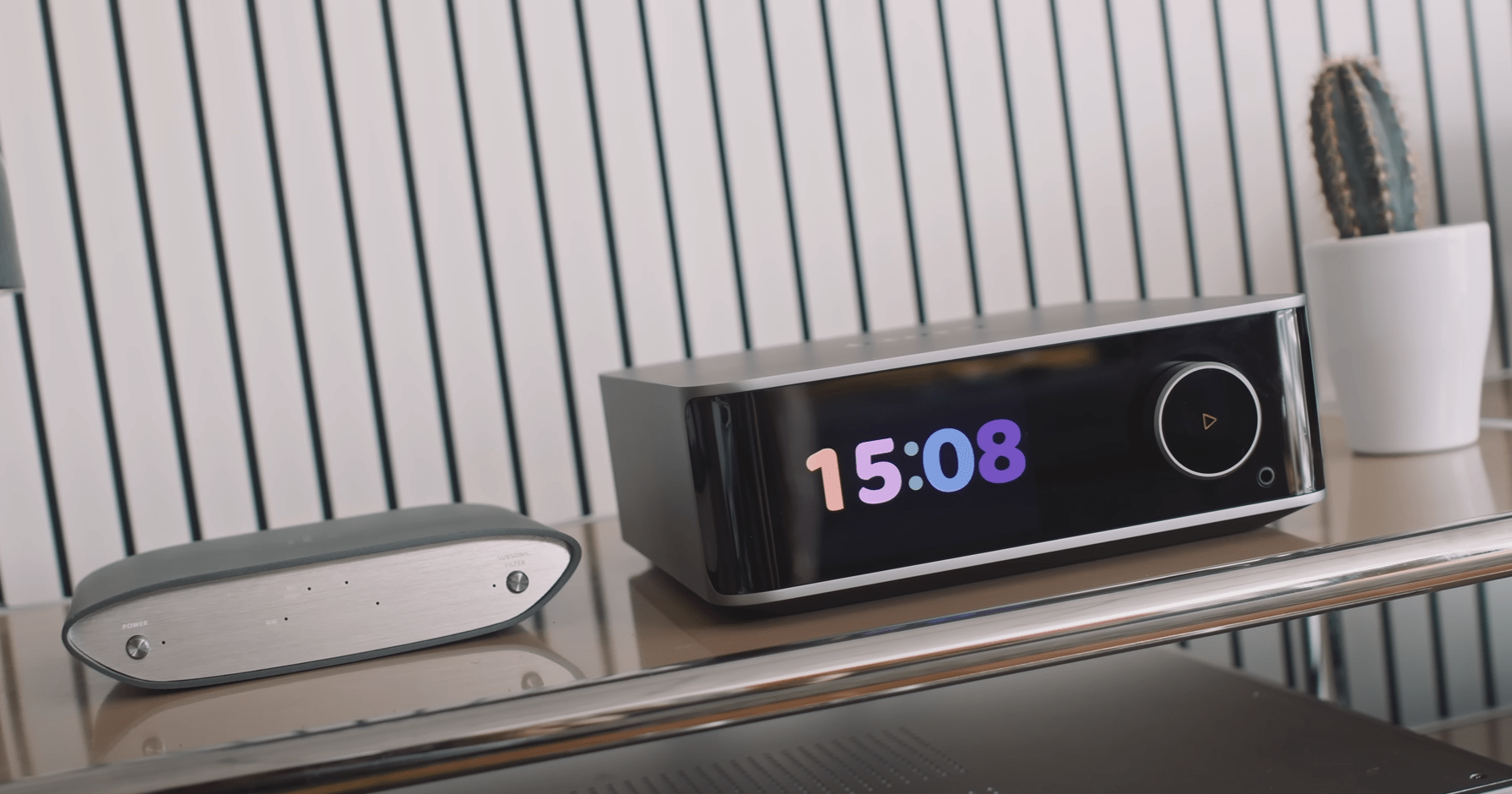
From phono to HDMI, from Roon to Tidal Connect: The WiiM Ultra covers the full spectrum of program sources and can also be used for the direct control of power amplifiers or active speakers. Thus presenting itself as a streaming pre-amplifier, but it can clearly be used as a standalone streamer for existing amplifiers. The sleek, precisely crafted aluminum casing is topped by a 3.5-inch display, which is almost 9 centimeters. Besides, there is a combination knob for volume/play and a 3.5mm jack for headphones on the front panel.
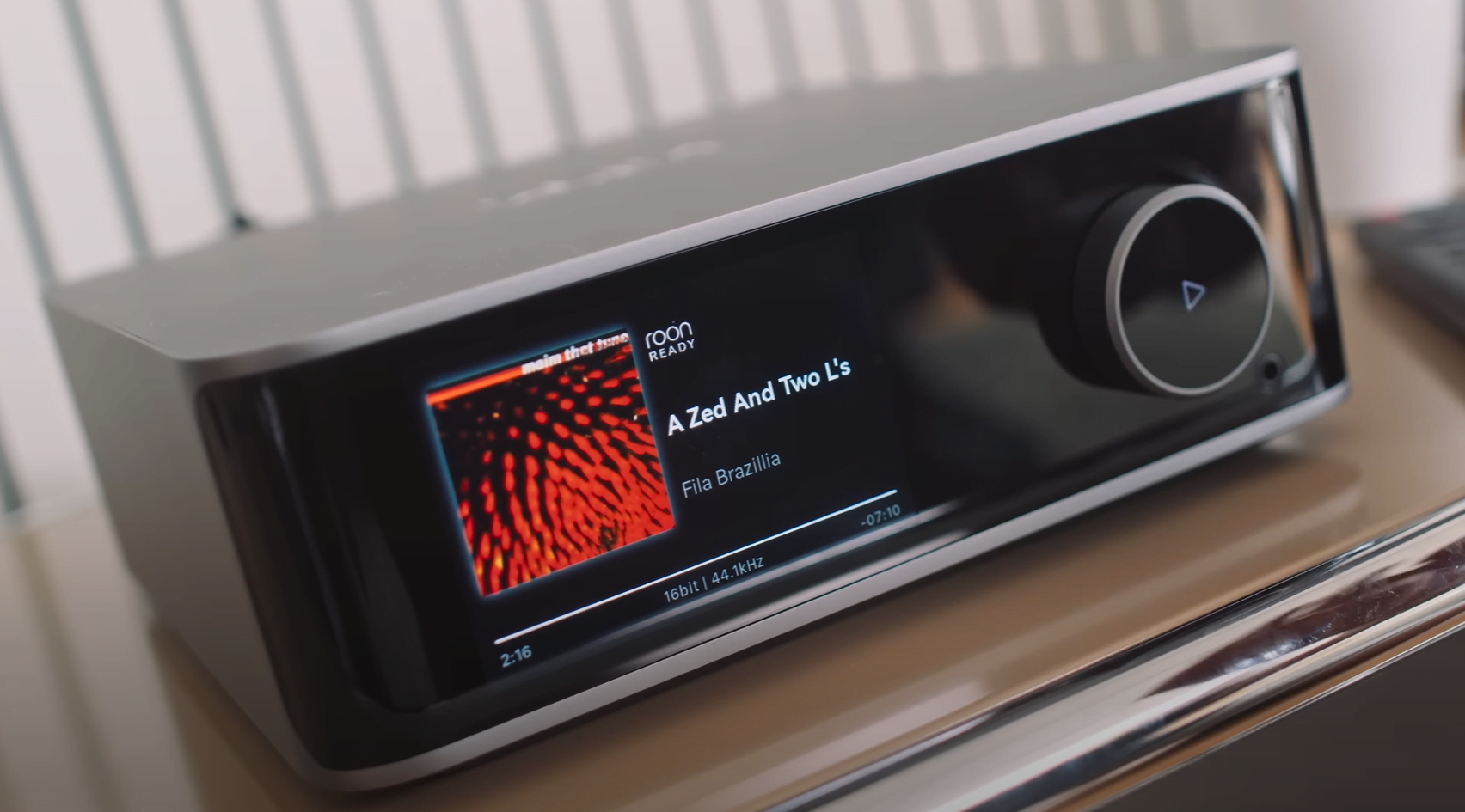
Phono MM and MC can be connected
Phono MM and MC inputs are available, along with one Line, S/PDIF coaxial, and HDMI ARC for TV sound. Both convey audio with 24 bits/192 kilohertz, and this quality also applies to the analog/digital conversion of analog sources. Hence, it is double converted. This might not appeal to analog purists, but the quality of both converters is very high. Our measurements and listening test confirmed this, more on this later.
USB storage serves as an essential source of self-ripped music collections. In the test, the WiiM Ultra accepted a USB SSD with 2 terabytes of storage, enough for 5200 hours of FLAC in CD resolution 16 bit/44.1 kHz or for 1600 hours in 24 bit/96 kHz. To use the WiiM’s USB host, the content of the storage must first be read into a database, otherwise, the streamer will even deny access to the directory structure of the mass storage. The latter is unusual, and, as in this point, it’s worth downloading the (German) manual of the current version from the ATR website for the not always self-explanatory operation.
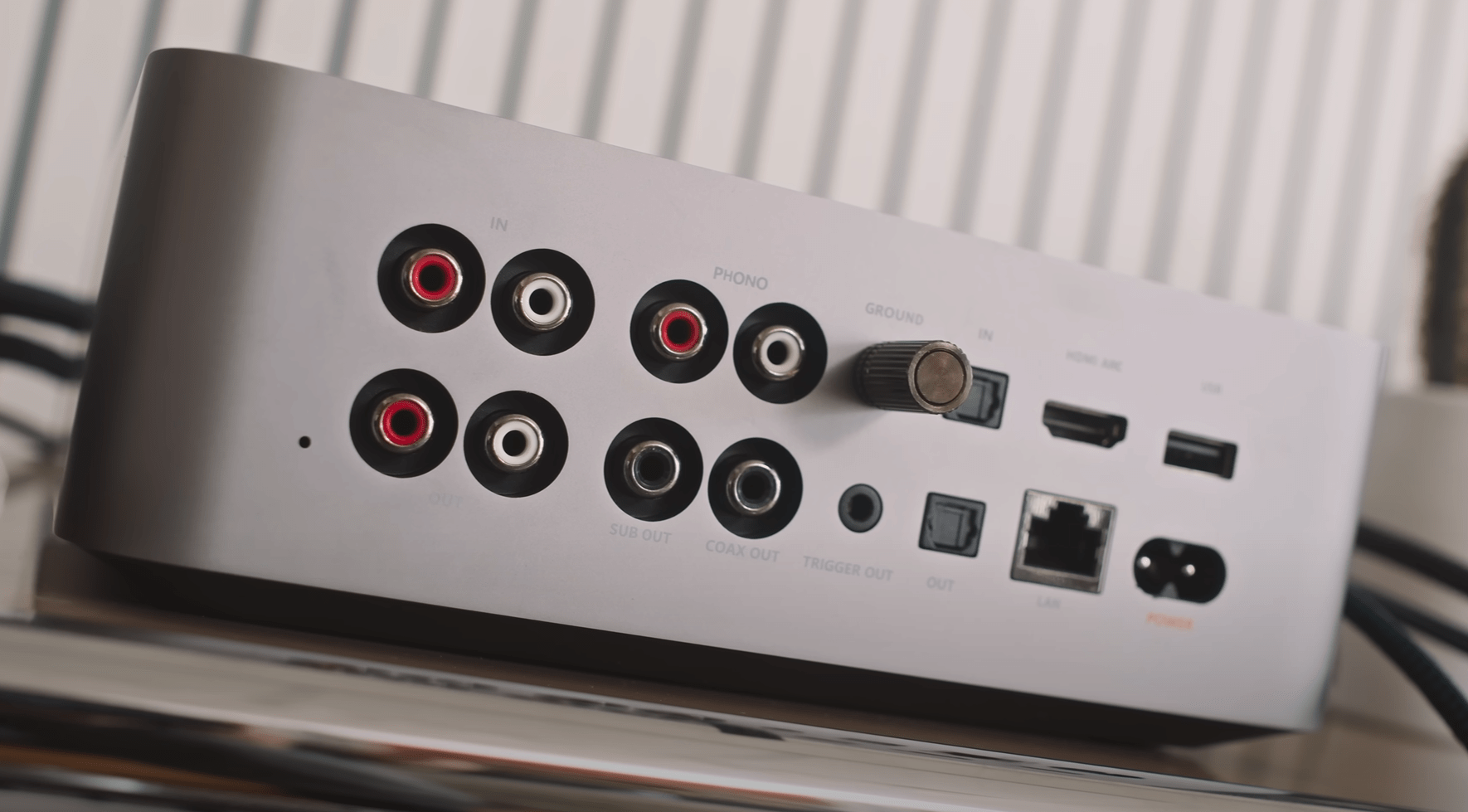
The use of the WiiM as a Bluetooth receiver is also possible but not documented. For this purpose, the audio codecs SBC, AAC, and LDC are available – but not the best-sounding versions aptX and LDAC. The latter applies to BT transmission – to headphones for example. The transmission is much more important in practice than the reception, as the latter can happen through many other channels.
This especially applies to streaming, and that’s the significant strength of the small WiiM. The only exception is that it does not support Airplay. This is due to the hardware used, which cannot be changed through an update.
For everything else, the Ultra lives up to its name by providing access to a plethora of music services as well as podcasts and web radio like top providers vTuner and TuneIn. The DLNA network protocol is supported for rendering operation, allowing the use of top smartphone apps like Bubble UPnP and mconnect (also for iOS).
Much like a DLNA client, the WiiM streamer allows access to music from NAS servers in the home network.
Among audiophile streaming enthusiasts, the selection of Tidal music is done in the Tidal app, not in the WiiM app, but in Connect. This feature allows comfortable and optimal use of all the service’s features. This is achieved by displaying the WiiM as a playback device in the Tidal app and selecting it as such. Besides Tidal, the WiiM can score with two treats: Firstly, with the support of the Tidal Connect protocol, the Ultra also dominates Spotify Connect, but Tidal, for only 11 euros per month, with its top sound quality, is a better offer for audiophiles.
The second treat of the WiiM is its full Roon certification. With Roon Remote, Tidal Connect, and DLNA apps, the volume of the WiiM can be finely adjusted in 1-dB steps, while the WiiM Home app and the supplied remote control only allow for 2 or 3 dB steps. The same applies to the use of the device buttons on smartphones. Fine level stepping is important for operation as a preamplifier, and to achieve this for other sources, the volume setting should be adjusted on the device.
Quick Overview of the WiiM Streamer
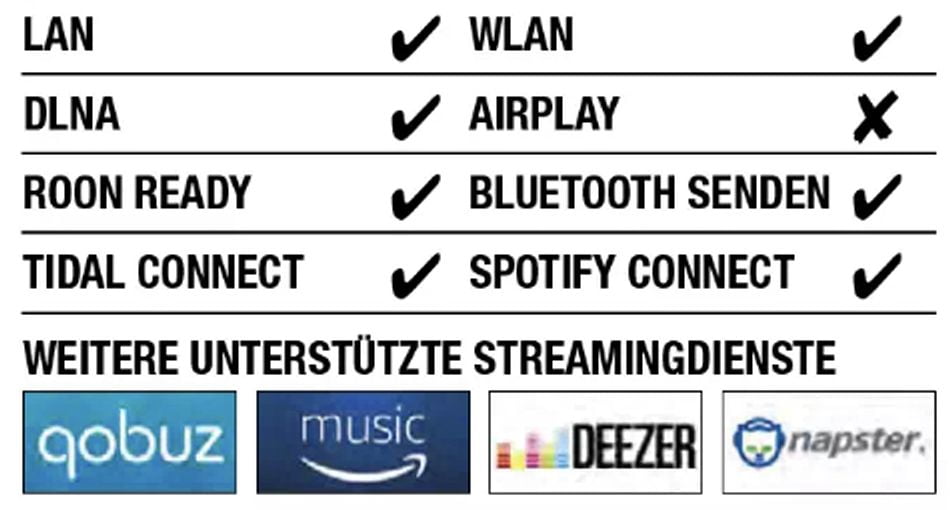
THE STREAMER QUICK CHECK
Of course, only the WiiM Home app reveals the streamer’s extremely many features. This includes individually adjustable input levels, presets, a wide multiroom, and voice control. Although room measurement is only of limited relevance due to the use of the smartphone microphone, gapless playback that even works in DLNA operation can fully convince.
For the digitization of analogue sources, WiiM relies on the top-class A/D converter PCM1861 from Burr-Brown/TI, which resolves 24 bit/192 kHz. The Sabre E5903802M from ESS used here belongs to the top class of the two-channel D/A converters and achieves 32 bit/384 kHz or DSD512. The high-quality amplifier chip TPA6120A2 from Texas Instruments, which can provide most high and low impedance headphones with enough power, is responsible for headphone operation.
It’s better to connect headphones by cable.
Therefore, a cable connection is preferable to Bluetooth for better headphone sound. In wired mode, the WiiM sounds very powerful and dynamic, effortlessly producing rich bass, pronounced mids and highs. The same applies to the line output. With one of my listening test favorites – “Comin’ Home Baby”, from David Sanborn’s album “Time Again” – the Ultra played grown-up, fully present, precisely and yet with pleasant lightness. Investing in the Sabre DAC pays off here. With the LP “A Memory Of Our Future” by the Mandoki Soulmates – heard via Phono MM – the WiiM also achieved a very nice sound result in the analog area.
THE APP TEST
The WiiM Home app is well matched to the streamer and allows complete control. This includes basic settings, the equalizer, and automatic room measurement, plus the inputs and outputs and the numerous music services. For optimal operating comfort, the Ultra can be supplemented with external apps via Tidal Connect (left), Roon, and UPnP.
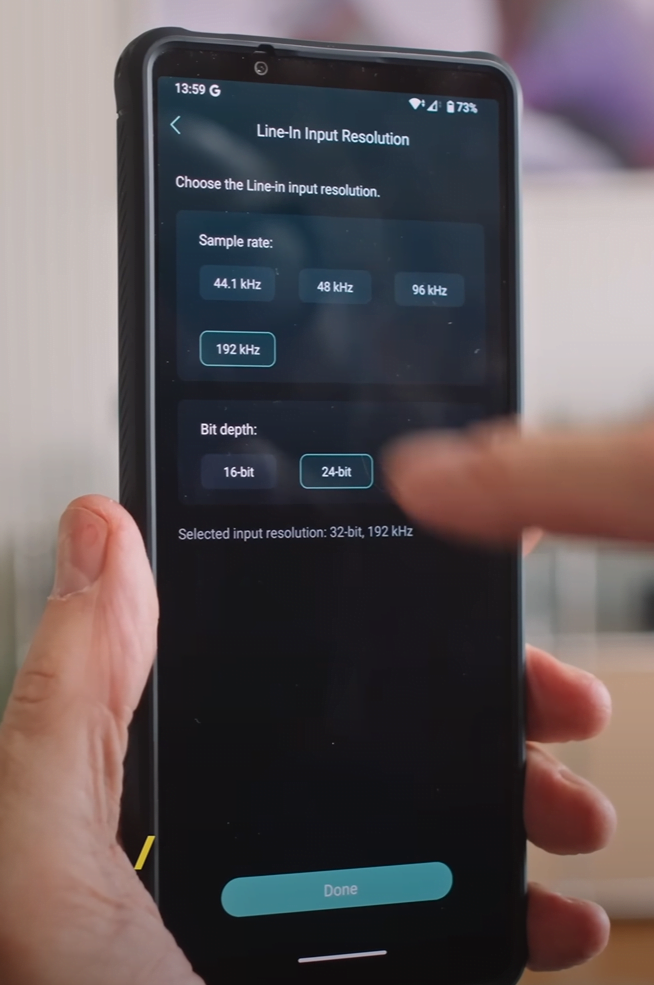
Performance report
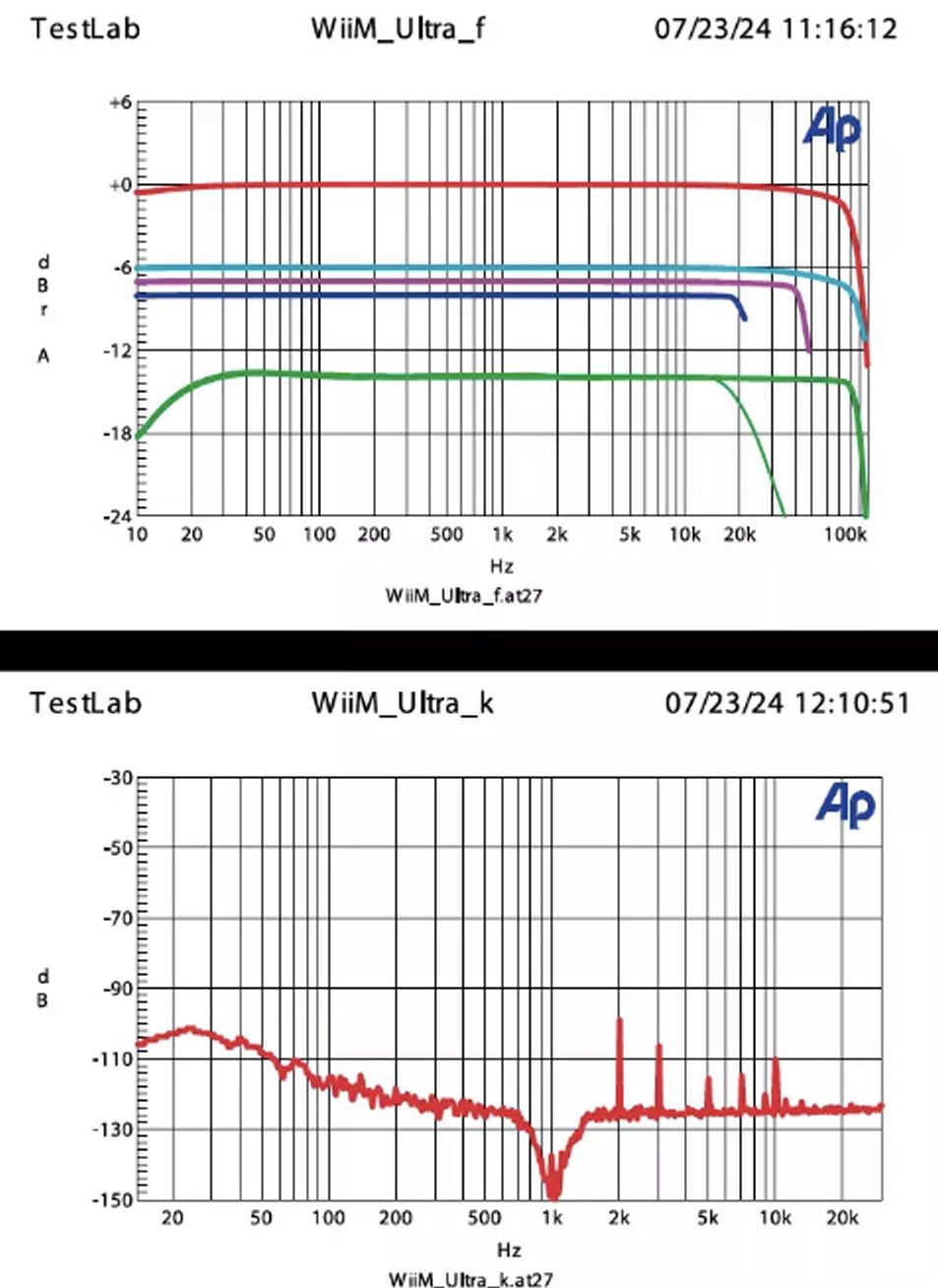
Frequency Response (from top): Analog Tone/3x PCM-Digital/Phono with Cartridge/Cable-Simulation (green, thin). Distortion Spectrum 0 dBFS at max output level (2.1 V): low noise floor, slightly rising towards low frequencies, no mains hum, minimal harmonic leftovers (THD+N 0.02%/SNR 117 dB). Analog input overloads from 2.1 V (some CD players produce louder signals); no gain for quiet signals (adjustment range -60 … 0 dB). Phono MM: low noise (78 dB), amplification 42 dB, input impedance 54 kohm/ 0 pF. Headphone output suitable for all models with normal efficiency (output voltage 1.8 V at 32 ohm; 3.5 V at 300 ohm; output resistance 40 ohm). Power consumption (Standby/Operation 5.5/6 W).
Specifications
| Display | 3.5-inch color touchscreen |
| DAC (Digital-to-Analog Converter) | ESS ES9038 Q2M, 32-bit/384kHz PCM and DSD512 |
| Supported Audio Formats | Up to 32-bit/384kHz PCM, DSD512 |
| Inputs | HDMI ARC, USB, Optical, Coaxial, RCA |
| Outputs | Analog (RCA, Headphone), Digital (Coax, Optical, USB), Wireless (BT, AirPlay, DLNA) |
| Wireless Connectivity | Wi-Fi 6E, Bluetooth 5.3 |
| Streaming Services Support | Spotify Connect, TIDAL Connect, AirPlay 2, Google Chromecast Audio |
| Audio Specifications | SNR: 121 dB, THD+N: 0.00018% (-115 dB) for 44.1k to 192k |
| Physical Dimensions | 8.1 x 8.1 x 2.9 inches (205 x 205 x 73 mm), Weight: 2.9 pounds (1.3 kg) |
| Additional Features | Built-in room correction, Adjustable subwoofer output, 12 V Trigger |
Verdict
All in all, the WiiM presents itself as a top playground for streaming fans, and at a high sound level. This is particularly true for use as a streamer on the existing HiFi system, but with extra apps also as a pre-amplifier.
Sound | 10 – Excellent |
Features | 10 – Very good |
Usability | 10 – Very good |
Build Quality | 8 – Good |
AUDIO BENCHMARK | |
OVERALL RATING | 10 Points |
PRICE/PERFORMANCE | Outstanding |
When you purchase through links on our site, I may earn an affiliate commission. Here’s how it works.









